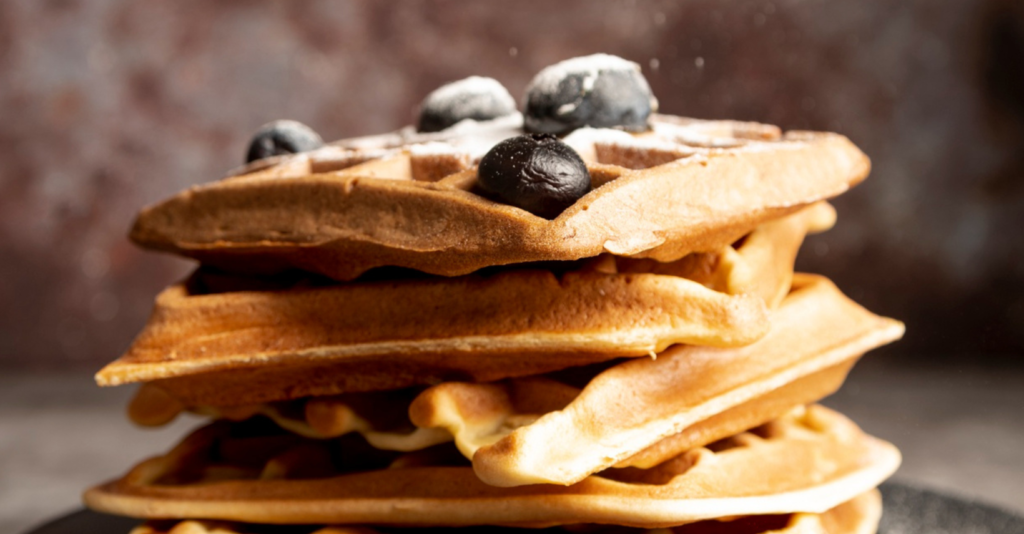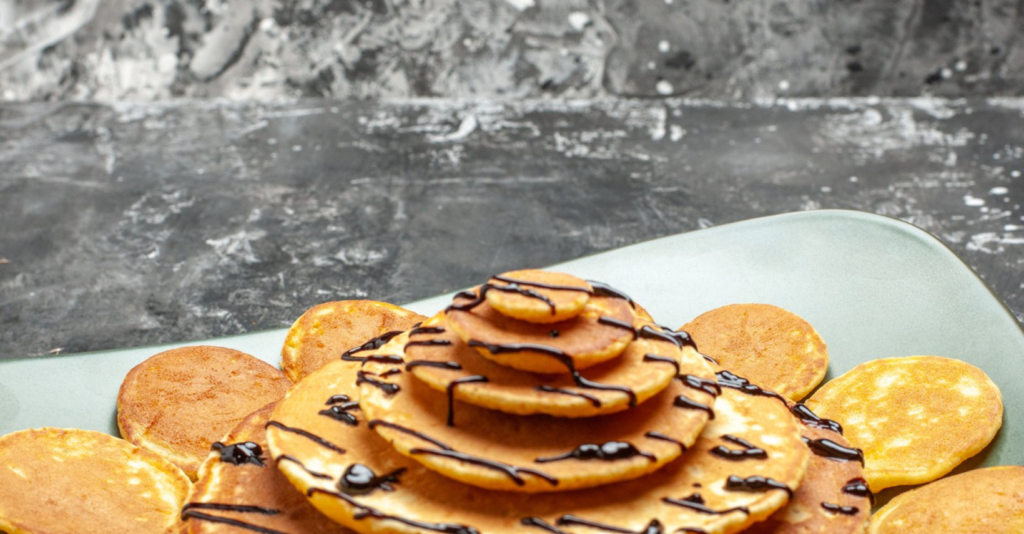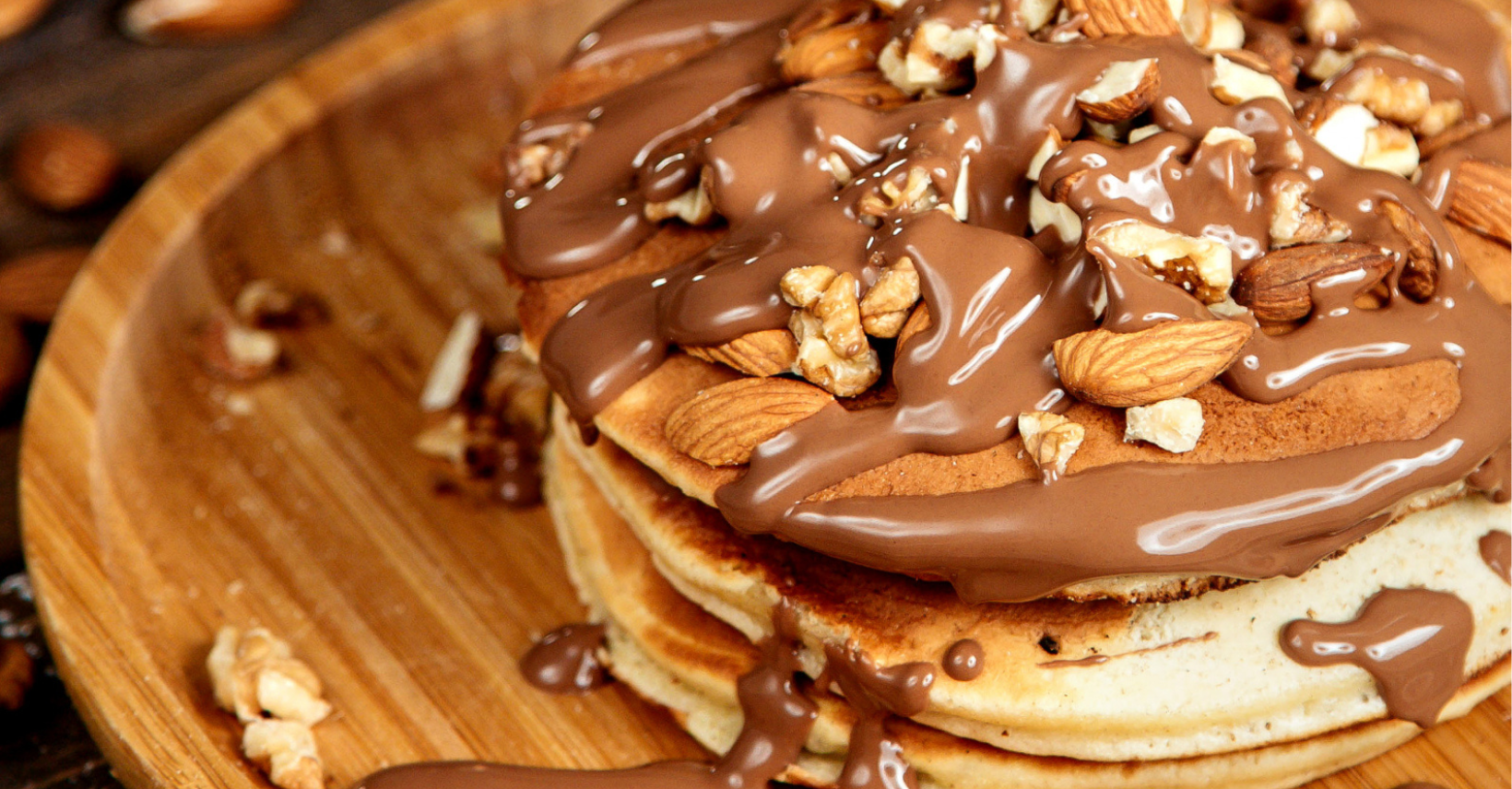What is Crepe Batter and Pancake Batter?
Crepe batter and pancake batter are two different types of batters used for making crepes and pancakes, respectively. Crepe batter is a thin, silky mixture that is poured onto a hot griddle or skillet to create delicate and thin pancakes called crepes. Pancake batter, on the other hand, is thicker and more substantial, resulting in fluffy and thick pancakes.
In crepe batter, the key ingredients typically include flour, eggs, milk, melted butter, and a pinch of salt. Pancake batter usually contains flour, eggs, milk, baking powder or soda, sugar, melted butter or oil, and sometimes vanilla extract.
While both batters share some similar ingredients like flour, eggs, and milk, the ratios and techniques used in preparing them differ. Crepe batter requires a higher proportion of liquid to create the desired thin consistency, while pancake batter has more leavening agents to produce a fluffy texture.
Understanding the differences between crepe batter and pancake batter is crucial for achieving the desired results when making either dish.
Definition of Crepe Batter and Pancake Batter
Crepe batter and pancake batter are two distinct types of batters used in cooking. Crepe batter is a thin, smooth mixture that is poured onto a hot griddle or skillet to create delicate and thin pancakes called crepes. It has a higher ratio of liquid ingredients like milk, which gives it its pourable consistency. The result is a thin, silky texture with a slightly crispy edge.
On the other hand, pancake batter is thicker and more substantial, resulting in fluffy and thick pancakes. It typically contains leavening agents like baking powder or baking soda, which create air pockets when cooked and give the pancakes their characteristic fluffiness. Pancake batter also often includes sugar and vanilla extract for added sweetness.
While both batters share some common ingredients, their different proportions and techniques used in preparation create distinct textures and tastes. Understanding this distinction is essential for achieving the desired results when making crepes or pancakes.

Key Ingredients in Crepe Batter and Pancake Batter
Crepe batter and pancake batter may seem similar, but they have distinct differences in their key ingredients. Crepe batter typically consists of flour, eggs, milk, butter, and sugar. The key ingredient here is the milk, which gives the batter a thin and pourable consistency.
On the other hand, pancake batter usually includes flour, eggs, milk, baking powder or baking soda, salt, sugar, and melted butter. The addition of leavening agents like baking powder or baking soda creates air pockets in the batter, resulting in fluffy pancakes.
While both batters share common ingredients like flour and eggs, it is the ratio and additional ingredients that set them apart. Crepe batter has a higher liquid-to-flour ratio, while pancake batter contains leavening agents for extra fluffiness. Pay attention to these differences when preparing your crepes or pancakes to achieve the desired texture and taste.
Texture and Consistency
The texture and consistency of crepe batter and pancake batter are quite different. Crepe batter has a thin and pourable consistency, much like a silky smooth liquid. This allows the batter to spread thinly across the cooking surface, resulting in delicate and thin pancakes.
On the other hand, pancake batter has a thicker consistency, thanks to the addition of leavening agents like baking powder or baking soda. This creates air pockets in the batter as it cooks, resulting in lighter and fluffier pancakes.
The differences in texture and consistency affect how the batters cook and flip. Crepes cook quickly and need to be carefully flipped using a thin spatula to prevent tearing. In contrast, pancakes require a longer cooking time to ensure that the center is fully cooked and fluffy.
So while both batters may share some common ingredients, their distinct textures and consistencies contribute to unique cooking experiences and end results.
Differences in Texture and Consistency between Crepe Batter and Pancake Batter
The texture and consistency of crepe batter and pancake batter are quite different. Crepe batter has a thin and pourable consistency, much like a silky smooth liquid. This allows the batter to spread thinly across the cooking surface, resulting in delicate and thin pancakes.
On the other hand, pancake batter has a thicker consistency, thanks to the addition of leavening agents like baking powder or baking soda. This creates air pockets in the batter as it cooks, resulting in lighter and fluffier pancakes.
The differences in texture and consistency affect how the batters cook and flip. Crepes cook quickly and need to be carefully flipped using a thin spatula to prevent tearing. In contrast, pancakes require a longer cooking time to ensure that the center is fully cooked and fluffy.
So while both batters may share some common ingredients, their distinct textures and consistencies contribute to unique cooking experiences and end results.
Effects on Cooking and Flipping
When it comes to cooking and flipping, the differences in texture and consistency between crepe batter and pancake batter play a significant role.
Due to its thin and pourable consistency, crepe batter cooks very quickly. It spreads easily across the cooking surface, resulting in delicate and thin pancakes. However, flipping crepes requires a gentle touch. Using a thin spatula is essential to avoid tearing the delicate pancake.
In contrast, pancake batter, with its thicker consistency, takes longer to cook. The presence of leavening agents creates air pockets in the batter as it cooks, resulting in lighter and fluffier pancakes. Flipping pancakes requires patience and careful timing to ensure that both sides are evenly cooked.
So, while both batters may share some common ingredients, their distinct textures and consistencies significantly impact the cooking process and flipping techniques required.
Flavor Profiles, Is crepe batter the same as pancake batter?
When it comes to flavor, crepes and pancakes offer distinct profiles that cater to different taste preferences. Crepes have a delicate and subtle flavor, allowing them to pair well with a wide range of sweet or savory fillings. The thin and tender texture of crepes allows the flavors of the fillings to shine through. Common sweet fillings include Nutella, fresh fruit, or whipped cream, while popular savory options include ham and cheese or spinach and feta.
On the other hand, pancakes have a heartier and more robust flavor. The addition of ingredients like buttermilk or vanilla extract gives pancakes a rich and comforting taste. Pancakes are often enjoyed with traditional toppings like maple syrup and butter, but they also lend themselves well to creative combinations such as chocolate chips, bananas, or even bacon. Whether you prefer a subtle and delicate crepe or a hearty and comforting pancake, both options can be customized to suit your taste preferences.
Contrasting Flavor Profiles of Crepes and Pancakes
When it comes to flavor, crepes and pancakes offer distinct profiles that cater to different taste preferences. Crepes have a delicate and subtle flavor, allowing them to pair well with a wide range of sweet or savory fillings. The thin and tender texture of crepes allows the flavors of the fillings to shine through. Common sweet fillings include Nutella, fresh fruit, or whipped cream, while popular savory options include ham and cheese or spinach and feta.
On the other hand, pancakes have a heartier and more robust flavor. The addition of ingredients like buttermilk or vanilla extract gives pancakes a rich and comforting taste. Pancakes are often enjoyed with traditional toppings like maple syrup and butter, but they also lend themselves well to creative combinations such as chocolate chips, bananas, or even bacon.
Whether you prefer a subtle and delicate crepe or a hearty and comforting pancake, both options can be customized to suit your taste preferences. Adding different fillings, toppings, or flavorings can enhance the overall taste experience and showcase the unique characteristics of each dish. So next time you’re deciding between crepes and pancakes, consider the flavor profile that best suits your cravings.
Sweet and Savory Variations about Is crepe batter the same as pancake batter?
When it comes to crepes and pancakes, both offer a wide range of sweet and savory variations to satisfy any taste preference. Crepes are incredibly versatile when it comes to fillings. For those with a sweet tooth, popular options include Nutella, fresh fruit, whipped cream, or even a sprinkle of powdered sugar. On the savory side, fillings like ham and cheese, spinach and feta, or smoked salmon with cream cheese are common choices. These combinations create a perfect balance of flavors in each bite.
Pancakes also lend themselves well to sweet and savory variations. For those with a sweet preference, adding chocolate chips, bananas, or blueberries to the batter can create bursts of sweetness. On the other hand, those who enjoy savory flavors can incorporate ingredients like bacon, cheddar cheese, or herbs into the pancake batter for an added punch of flavor.
No matter your preference, both crepes and pancakes allow you to get creative with your fillings and toppings for a truly personalized dining experience.

Cooking Techniques
Unique Cooking Techniques for Crepes and Pancakes
When cooking crepes and pancakes, distinct differences in techniques exist. A special tool called a crepe pan, which is a thin, flat skillet with low sides, is necessary for crepes. The batter spreads thinly and evenly across the pan, using a swirling motion to ensure it covers the entire surface. The key here is to achieve a delicate and lacy texture.
On the other hand, a regular griddle or frying pan typically cooks pancakes. A ladle pours the batter onto the heated surface, creating round, thick pancakes. The key with pancakes is achieving a fluffy and thick texture, which often involves adding baking powder or soda to the batter.
In terms of cooking time, crepes cook much faster than pancakes due to their thinness. Since crepes are delicate, they require careful flipping using a spatula or even just by lifting the edges. On the other hand, bubbles forming on the surface indicate when to flip pancakes easily.
Overall, while both crepes and pancakes require different cooking techniques, mastering these techniques will result in delicious and satisfying dishes.
Temperature and Cooking Time Variances
When it comes to cooking temperature and time, crepes and pancakes differ. Crepes require a low to medium heat setting on the stovetop, usually around 325-350°F (163-177°C). Since they are thin and delicate, crepes cook quickly, usually around 1-2 minutes per side. It’s important to monitor the heat closely to avoid burning or overcooking.
On the other hand, pancakes cook at a higher heat setting, around 375-400°F (190-204°C). The higher heat helps create a fluffy texture and ensures that the pancakes cook evenly throughout. Cooking time for pancakes is slightly longer than crepes, typically around 2-3 minutes per side, depending on the thickness.
It’s crucial to find the right balance between heat and cooking time for both crepes and pancakes. Adjusting these variables may take some practice to achieve perfect results. Remember to use a timer and pay attention to the appearance and color of the batter as it cooks.
Serving and Presentation
When serving and presenting, crepes are known for their elegant shapes, either rolled or folded, creating visually appealing arrangements. They can be served individually or stacked, accompanied by various toppings like fresh fruits, whipped cream, Nutella, or savory options such as cheese and ham.
In contrast, pancakes are typically served stacked with butter on top. They are often accompanied by maple syrup, fruit compote, or chocolate sauce. Pancakes have a more rustic and hearty appearance compared to crepes.
Both crepes and pancakes can be garnished with powdered sugar or cinnamon for an extra visual touch. Ultimately, the serving and presentation of crepes and pancakes can vary depending on personal preference and creativity.
Different Ways to Serve Crepes and Pancakes
When it comes to serving crepes, numerous ways to get creative exist. Rolling them up into elegant cylinders or folding them into quarters creates a visually appealing presentation. Serving crepes individually on a plate or stacking them in a beautiful tower is an option. To further enhance the experience, top them with powdered sugar or a drizzle of chocolate sauce for added sweetness.
As for pancakes, the traditional way to serve them is by stacking them on a plate. Placing a pat of butter on top allows it to melt and create a rich and indulgent flavor. Adding a generous drizzle of maple syrup provides that classic taste. For those looking for something different, experimenting with toppings like fresh fruit compote, whipped cream, or even a scoop of vanilla ice cream is an option.
In conclusion, serving crepes and pancakes offers endless possibilities for creativity. Whether you prefer the elegance of rolled crepes or the comfort of stacked pancakes, serving these delightful treats is all about personal preference and presentation.
Ideal Toppings and Fillings
When it comes to toppings and fillings for crepes and pancakes, the options are virtually endless. For crepes, I love filling them with a variety of sweet and savory ingredients. Some popular sweet fillings include Nutella, fresh berries, whipped cream, or a dollop of lemon curd. For a savory twist, try filling your crepes with ham and cheese, spinach and feta, or sautéed mushrooms.
When it comes to pancakes, classic toppings like butter and maple syrup are always a hit. But don’t be afraid to get creative! You can add sliced bananas and caramel sauce, peanut butter and jelly, or even a sprinkle of chocolate chips. Fresh fruit compotes, flavored syrups, and chopped nuts are also great options.
Remember, the key to serving these delicious treats is to let your imagination run wild. Try different combinations of flavors to find your personal favorites. Whether you’re serving crepes or pancakes, there’s no wrong choice when it comes to toppings and fillings.

Conclusion
In conclusion, while crepe batter and pancake batter share some similarities in their key ingredients, they have noticeable differences in texture, flavor profiles, cooking techniques, and serving options. Crepes are thin and delicate, with a smoother texture, while pancakes are thicker and fluffier. Crepes lend themselves well to both sweet and savory fillings, while pancakes are often enjoyed with classic toppings like butter and syrup.
It is important to note that crepe batter and pancake batter are not interchangeable in recipes. The variations in texture and consistency require different cooking techniques and temperatures for optimal results. However, both crepes and pancakes offer endless possibilities for creativity in terms of flavors and presentation.
So, is crepe batter the same as pancake batter? The answer is no. While they may have some similarities, the two batters possess distinct characteristics that make them unique. It’s worth experimenting with both to discover your own personal preferences and to enjoy the delicious world of crepes and pancakes.
Final Verdict: Is Crepe Batter the Same as Pancake Batter?
In my opinion, crepe batter is not the same as pancake batter. While they may share some similar ingredients, such as flour, eggs, and milk, crepe batter and pancake batter have distinct differences that make them unique.
Crepes have a thin and delicate texture, contrasting with the thicker, fluffier consistency of pancakes. This difference affects how they’re cooked, with crepes needing low to medium heat and quick cooking, while pancakes require higher heat and more time.
Moreover, crepes boast a neutral flavor profile, making them suitable for sweet or savory fillings. In contrast, pancakes have a slightly sweeter taste and are typically enjoyed with sweet toppings such as butter and syrup.
So, while both crepe batter and pancake batter result in delicious breakfast treats, they each offer their own unique qualities that set them apart. It’s worth trying both to discover your personal preference and enjoy the variety of flavors and textures each offers.
